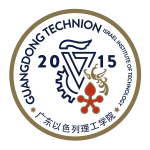
Olivier Habimana
Associate Professor, Biotechnology and Food Engineering Program
Office: R616, North Campus
My achievements in the areas of food and environmental microbiology research have allowed me to explore microbial communities on abiotic surfaces, bridging the areas of food safety and water safety as it relates to the water-food-energy-nexus. I have emerged as an established scientist within the biofilm research community based on my significant contributions in the broad topic area of microbial ecosystems on inert surfaces, focusing on microbial biofilms, from the investigation of initial bacterial adhesion onto surfaces to finally, biofilm detachment. I’ve also, in recent years, placed much emphasis on developing multispecies biofilm models to be used for fundamental and applied research.
As part of the environmental biofilm research axis, my team will be evaluating the bioaccumulated levels of pollutants within sampled freshwater and benthic biofilm communities from freshwater environments. In the short term, the knowledge acquired from this project will allow the comparison of microbial diversity, abundance, and functional and gene expression profiles between benthic biofilm communities and corresponding water samples from the same freshwater environment sites as determined by their level of pollution. Moreover, in the mid-to-long term, this study will allow targeted fundamental research programs focusing on biofilms’ reactivity to key pollutants using engineered biofilm systems to be developed in my lab, as well as studying pollution impacts on freshwater benthic communities elsewhere in the world. This area of research is relevant to furthering our understanding of the link between biofilms and water quality meant for agricultural activities and, ultimately, food/produce safety.
Concerning the food processing/food safety research axis, my lab will also be involved in the microbiological surveying of food contact surfaces used during food processing. We aim to profile the microbial communities and isolate and identify various strains of microbes from multiple food processing industries and markets. The combined next-generation sequencing with integrated -omics analysis approach to be used will prove to be helpful in the study of other non-foodborne and foodborne pathogens isolate alike, and in the longer term, will help establish a library of a unique database to be used in the context of future epidemiological investigations. This study should serve as a basis for a larger-scale review of current hygienic practices during food processing in Southeast Asia to improve food safety and public health. In a broader perspective, the lessons learned can also be applied on a broader global scale, in which food contact surface sampling can be performed globally, garnishing a wealth of information on the hygienic situation of different regions of the world, linking climate, socio-economic, infrastructural and other key drivers in the analysis of food processing microbiota.
Group Website: http://thehabimanalab.com
- Bioadhesion;
- Biofilms;
- Microbial Ecology;
- Food microbiology;
- Food Safety
Pu Y, Pan J, Wang H, Xu X, Xu Z, Chen X, Yang Y, Sun H, Li M, Habimana O#. Structural, metagenomic and metabolic shifts in multispecies freshwater biofilm models exposed to silver nanoparticles. Journal of Environmental Chemical Engineering 2023, 11(1), 109162 (IF: 7.968)
Kaur KD, Habimana O#. Death at the interface: Nanotechnology’s challenging frontier against microbial surface colonization. Frontiers in Chemistry 2022 10:1003234 (IF: 5.545)
Yao Y, Habimana O#: Biofilm research within irrigation water distribution systems: Trends, knowledge gaps, and future perspectives. Science of The Total Environment 2019, 673, 254-265. (IF: 10.754)
Rao S, Ngan WY, Chan CL, Sekoai P, Fung AHY, Pu Y, Yao Y, Habimana O#: Questioning the source of identified non-foodborne pathogens from food-contact wooden surfaces used in Hong Kong’s urban wet markets. One Health 2021, 13:100300 (IF: 9)
Fung AHY, Rao S, Ngan WY, Sekoai TP, Touyon L, Ho TM, Wong KP, Habimana O#. Exploring the optimization of aerobic food waste digestion efficiency through the engineering of functional biofilm bio-carriers. Bioresource Technology 2021, 125869 (IF:11.889)
Yao Y; Liu Z; Yip KK; Pu Y; Cheng W; Li M and Habimana O#: Cross-continental Scale Pollution of Freshwater Biofilms with Antibiotic Resistance Genes. Science of the Total Environment 2022, 818: 151835 (IF: 10.754)
Yao Y, Pan J, Pu Y, Kan K, Li M and Habimana O#: The response of a freshwater biofilm model to a sub-inhibitory concentration of erythromycin: a metatranscriptomic study. Journal of Environmental Chemical Engineering 2022, 10(2): 107248 (IF: 7.968)
Pu Y, Pan J, Yao Y, Ngan WY, Yang Y, Li M, Habimana O#: Ecotoxicological effects of erythromycin on a multispecies biofilm model, revealed by metagenomic and metabolomic approaches. Environmental Pollution 2021, 276: 116737. (IF: 9.988)
Ngan WY, Habimana O#: From farm-scale to lab-scale: The characterization of engineered irrigation water distribution system biofilm models using an artificial freshwater source. Science of The Total Environment 2020, 698: 134025. (IF: 10.754)
Habimana O, Zanoni M, Vitale S, O’Neill T, Scholz D, Xu B, Casey E: One particle, two targets: A combined action of functionalized gold nanoparticles, against Pseudomonas fluorescens biofilms. Journal of Colloid and Interface Science 2018, 526:419-428. (IF: 9.965)
Habimana O, Heffernan R, Casey E: Nanofiltration-induced cell death: An integral perspective of early-stage biofouling under permeate flux conditions. Journal of Membrane Science 2017, 541:93-100. (IF: 10.53)
